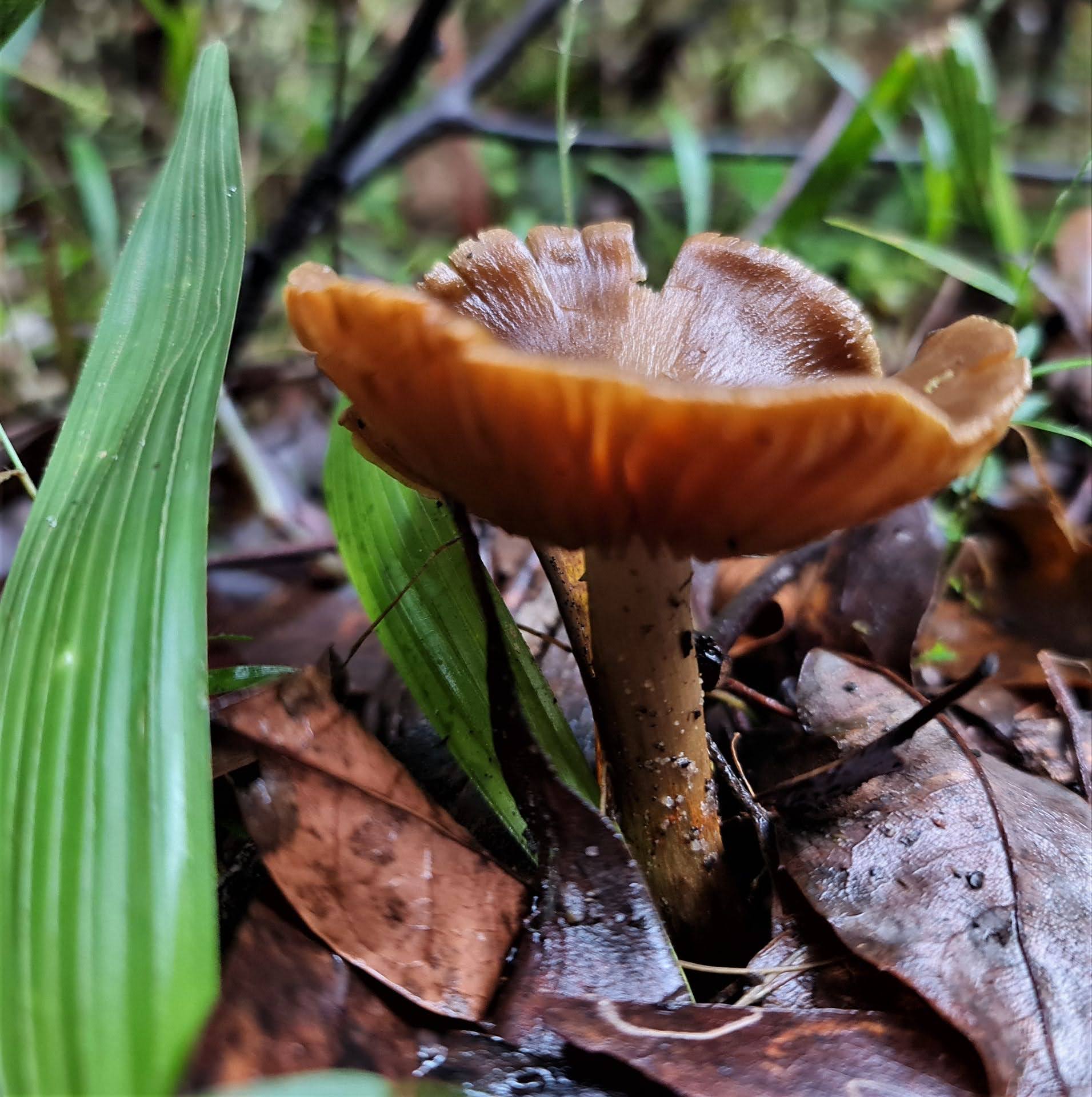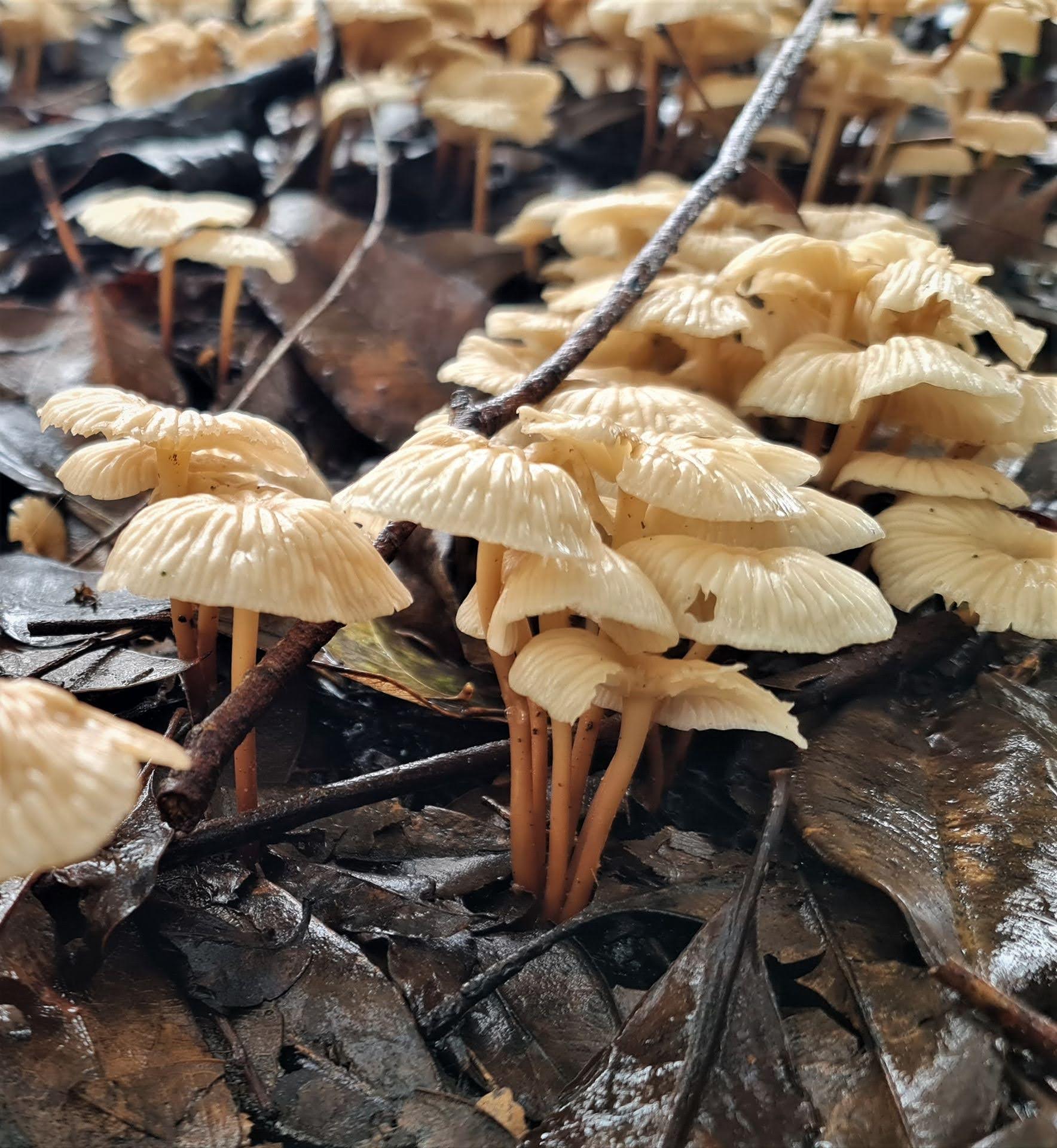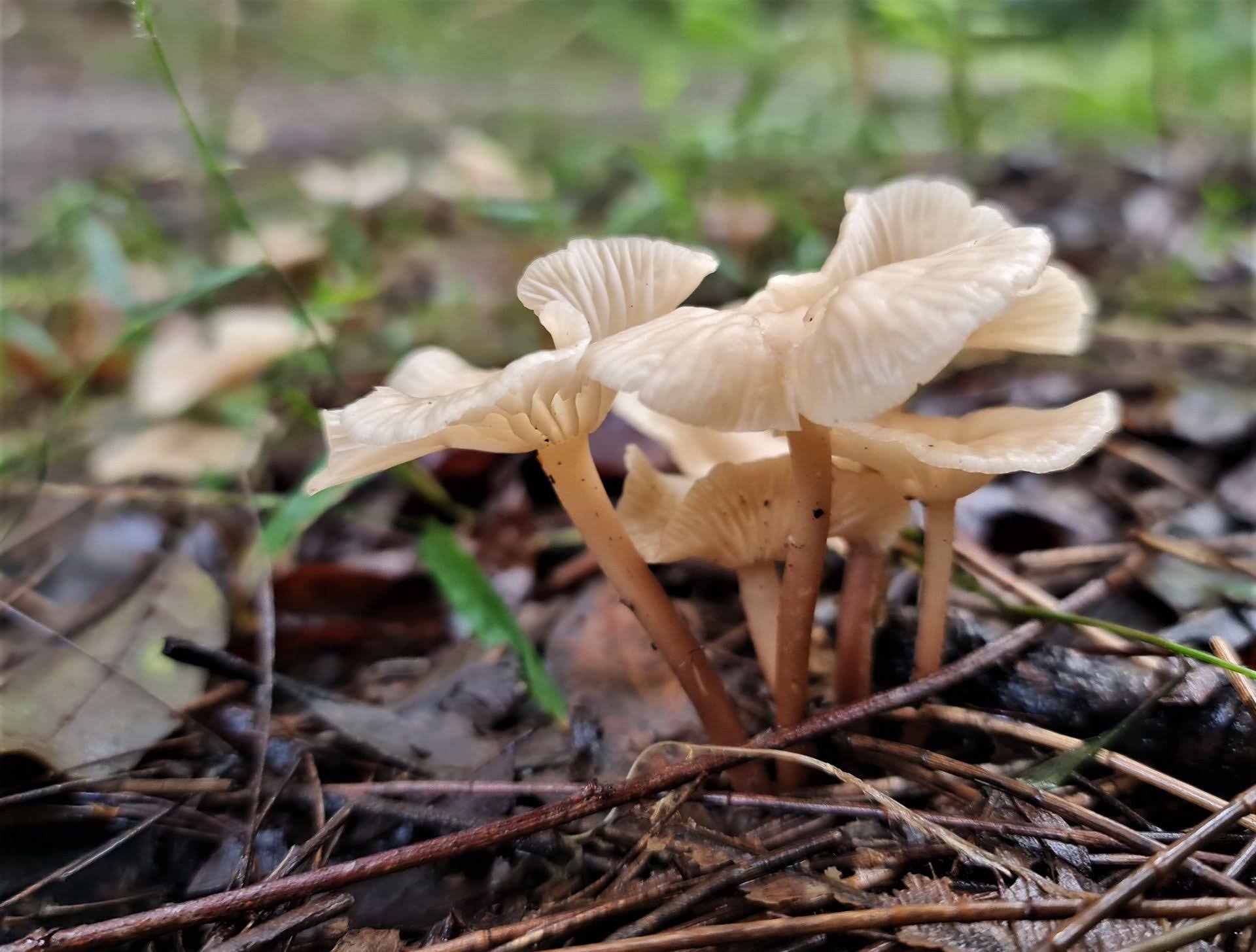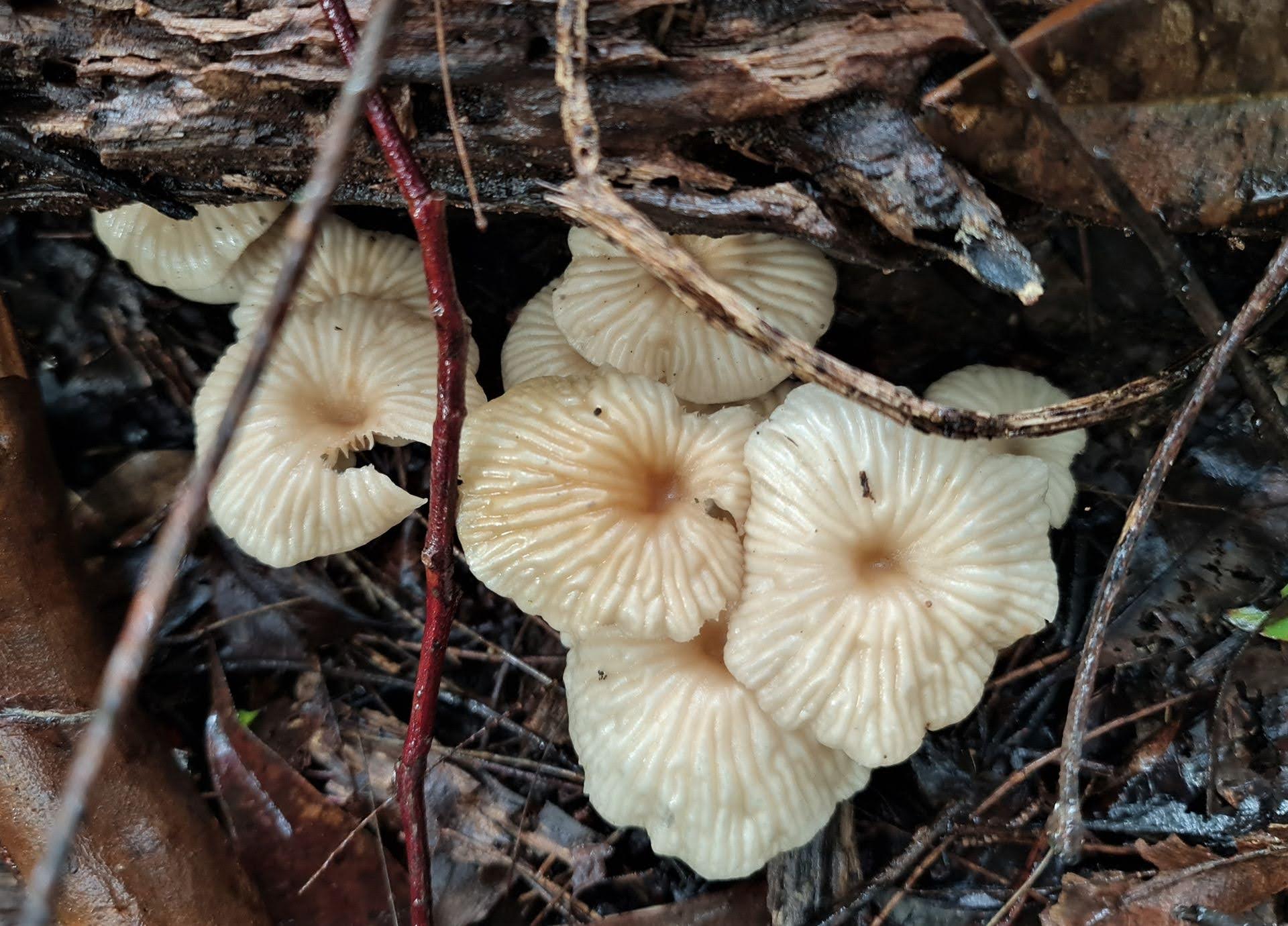May 26 - June 15, 2024: Issue 627
Fungi Season At Irrawong: May 2024 + Magic Of Fungi: David Noble
Photos by Joe Mills

Joe Mills took a walk along the Irrawong track up into Ingleside along the creek way a few weeks ago, just after all that rain during the first week of May, and took some of these great photos of fungi now out - as it does every Autumn. But fungi can appear at other times too as Botanist David Noble, explains:
''Fungi are found in all environments. They are around the roots of most plants, and in the stomachs of most animals. They range in size from microscopic yeasts to huge fungal mycelium that thread their way through hundreds of hectares. They make up perhaps 25% of the biomass.
The average person thinks of fungi as mushrooms, and indeed the word “fungi” is derived from the Latin word for mushroom, but they are much more than that. Mushrooms are thought to make up only about one fifth of the Kingdom. Other types of fungi can be brackets, clubs, cups, strange coral shapes, truffles, morels, stinkhorns, moulds, smuts and rusts.
DNA analysis shows that fungi are closer to animals than plants. They have no photosynthesis and obtain their nutrients from the breakdown of decaying organic material. This is mainly plants but can be animals, dung or even other fungi.
Fungi often reproduce both sexually and asexually in cycles. Most of their life is spent underground or inside a host such as a rotten log. All they consist of is a tangle of microscopic threads called hyphae. At certain times, often in response to rain, the mass of hyphae form larger threads called mycelium and from this can emerge what is called the fruiting body – the mushroom, or coral, club, cup etc.
It is the tiny hyphae that are so important to the environment. Most plants have mutually beneficial relationships with fungi. Fungi are mycorrhizal partners of plants – this is where the plant root is combined with a fungus. This greatly increases the effective surface area of the root helping the plant obtain more water and nutrients, and the fungus gets some of the products of photosynthesis. Some plants like orchids often need certain fungi present for their seeds to germinate.
Fungi can been seen all year round. Some species like truffles develop their fruiting bodies underground so can grow in dry areas like deserts. These truffle-like fungi are an important food source for some animals, such as Bandicoots and the endangered Long-footed Potoroo. Other types of fungi are eaten by insects, slugs and other invertebrates. Most fungi are seen when their fruiting body emerges from soil or logs or other substrates. In NSW this is usually during Autumn (or perhaps more accurately January to August), often in moist environments such as rainforests and then more than likely a few days after a reasonable fall of rain.
The next time you are in the bush keep your eyes open and look out for fungi. Once you find one, look for more nearby. They often occur in clusters that include many species. These fungi one day may help us learn the biochemistry to break down pollution or to kill tumours.
And to finish – do not eat any fungi you find in the bush. Even experts make mistakes with identification, and a mistake may be fatal.''
The National Parks Association of NSW recently published a presentation 'The Magic of Fungi' presented by Mr. Noble - that runs below for those whop may be interested in finding out more.
Some more of Joe's pictures:














Irrawong Falls, May 6 2024 - below: the creek leading out from there into Warriewood Valley

Magic Of Fungi: David Noble
Published by the National Parks Association of NSW, March 28, 2024